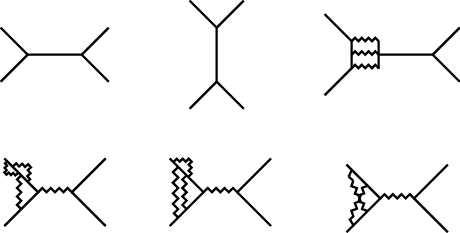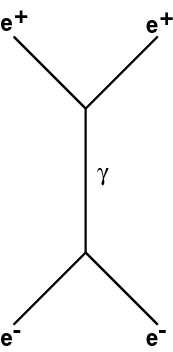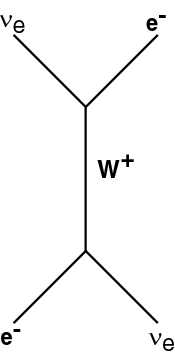

Feynman diagrams are much more than simple drawings, however, they are also a way of writing complex equations. Each element of a Feynman diagram is equivalent to a piece of an equation, so Feynman diagrams also help physicists to simplify their maths. We don't have to worry about that, but let's look at a couple of Feynman diagrams for some simple processes...

Here and electron and a positron bounce off each other - scatter to use the technical term - by exchanging a photon, labelled gamma. This is an example of an interaction manifesting itself as a force.

In this example, the interaction is not manifesting itself as a force. Instead, an electron and a positron destroy each other, or annihilate, creating a photon, which later materialises into a new electron and positron. This is what happens when matter and antimatter meet.
Let's take a closer look at the annihilation. Starting on the left, the negatively charged electron and positively charged positron come together and meet. When they do, they disappear and give rise to a photon, which has no charge; the positive and negative have cancelled each other out. A bit later, the photon materialises into a new positive and a new negative particle. If the initial electron-positron collision has the right amount of energy, these particles could be pairs of muons, taus, or quarks - as long as their combined charge adds up to zero. Conservation of electric charge in particle interactions is a fundamental law of nature.

This looks very similar, but one of the messengers of the weak interaction has been exchanged, a Z particle.

Here, something different is going on, the weak messenger particle is carrying electric charge. In this case, the messenger is a W particle. Unlike photons and Z particles, W particles are electrically charged, and there are both positive and negatively charged ones. This process could not happen electromagnetically, because charge would not be conserved with an electrically neutral messenger. Notice that some processes such as electron-positron scattering proceed via photon and Z particle exchange: they have contributions from both the electromagnetic and the weak interaction.
